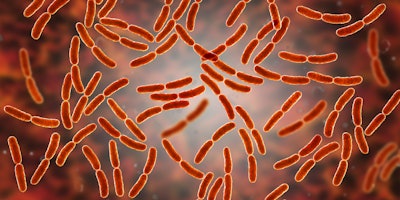
Nanoparticles used to brighten the color of meat could negatively impact human gut health, revealed research conducted in broiler chicken eggs.
The study, published in the Journal of Antioxidants, focused on four specific metal oxide nanoparticles. Interest in nanoparticles in food additives has become widespread in recent years, however little is known about long-term effects on the human gastrointestinal tract.
Researchers from Binghamton University, State University of New York and Cornell University took part in the study.
Broiler eggs as a research model
To investigate how nanoparticles affect the human gut, the researchers injected the additives into the amniotic sac of broiler eggs.
Broiler eggs were chosen as a research model for a variety of reasons. First, the chicken intestinal tract contains similar microbiota and bacterial components to those found in the human digestive system. In addition, broilers are bred to grow rapidly, which means that any results will be seen quickly.
“The chicken (Gallus gallus) model is an established and robust method for quantifying nutrient bioavailability, brush border enzyme activity, microbiome alterations and microbiota metabolism,” Gretchen Mahler, professor of biomedical engineering and interim vice provost and dean of the Graduate School, Binghamton University, explained.
“Chickens have been used, by our group and others, in the study of several human diseases including autoimmunity, the microbiome, and micronutrient deficiencies.”
Nanoparticle effects on human gut health
Once the chicks hatched, the researchers studied the gene expression, microbiota composition and structure of the small intestine, liver and microbiome.
They found that two of the nanoparticles – silicone dioxide and titanium dioxide – negatively impacted chick gut health. The others – zinc oxide and iron oxide – resulted in more neutral effects.
“In this study we were working with an in ovo injection method, which is an efficient way to screen a larger number of conditions and doses of nanoparticles. In the future, we plan to screen additional types of nanoparticles that are commonly found in food, and to perform studies on adult chickens,” said Mahler.
Potential implications for poultry diets
The findings may have implications for poultry diets.
“Some of the food grade nanoparticles we were studying were beneficial to poultry. Food-grade Fe₂O₃ nanoparticles were found to be a possible option for iron fortification,” she added.














